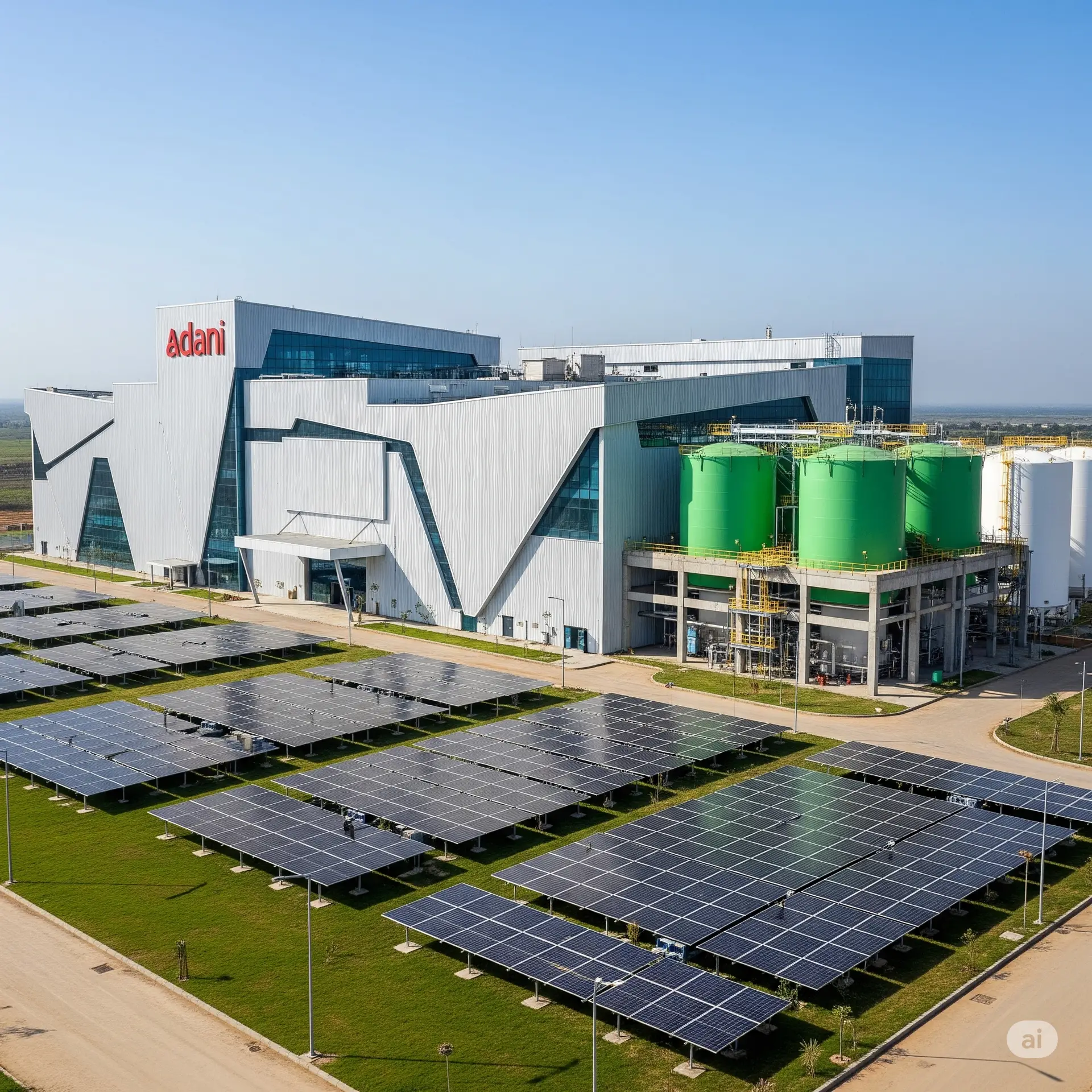Adani Group has flipped the switch on the nation’s first stand-alone green hydrogen facility in Kutch, Gujarat. Unlike grid-tied pilots that draw backup electricity from coal or gas, this site operates 100 percent off-grid, using a hybrid mix of solar, wind, and battery storage to run electrolysers around the clock. The plant’s initial capacity—roughly 5 MW of alkaline electrolysis—is designed to scale to 100 MW within three years.
What Makes This Project Different?
| Feature | Traditional Hydrogen | Adani’s Green Hydrogen Plant |
|---|---|---|
| Power Source | Fossil-fuel grid or partial renewables | Fully islanded solar-wind-battery microgrid |
| Hydrogen Color | Grey / Blue | Green |
| Carbon Intensity | High (8–10 kg CO₂ / kg H₂) | ~0 kg CO₂ / kg H₂ |
On-site renewables eliminate transmission losses and curtailment costs.
A smart microgrid controller balances output so electrolysers stay near peak efficiency even when solar or wind dips.
Modular expansion allows Adani to add electrolyser racks and battery blocks without lengthy permitting.
Why Off-Grid Hydrogen Matters
True zero-carbon fuel – no fallback to polluting grid power.
Energy security – shields production from fossil fuel price swings.
Rural development – remote deserts become hubs for high-skill green-tech jobs.
Export potential – positions India to supply low-carbon ammonia and e-methanol to the EU and Japan, where green-fuel import demand is rising.
Economic and Environmental Impact
Local supply chain boost: Adani’s electrolyser stacks are partially assembled at its upcoming Khavda renewable manufacturing cluster, keeping capital in India.
CO₂ mitigation: At full scale, the plant could avoid 150,000 tonnes of CO₂ annually, equivalent to removing 30,000 cars from the road.
Downstream value: Hydrogen will feed a pilot green-ammonia unit and fuel Adani’s own heavy-haul trucks at Mundra Port.
Challenges on the Horizon
Cost parity: Off-grid green hydrogen still costs 1.5–2× more than grey hydrogen. Falling electrolyser prices and renewables LCOE should narrow the gap.
Water security: Electrolysis demands roughly 9 litres of purified water per kilogram of hydrogen. Adani has built an on-site desalination unit, but scaling nationally will require careful water-resource planning.
Regulatory clarity: India’s final Green Hydrogen Standard (defining carbon intensity thresholds) and incentives under the National Green Hydrogen Mission must align to attract wider investment.
Key Takeaways for Investors and Policymakers
Adani’s off-grid model demonstrates that 24/7 green hydrogen is commercially and technically feasible in renewable-rich regions.
Early movers gain a licensing edge as global offtakers seek certified zero-carbon fuels.
Supportive policy—priority land allocation, low-interest financing, and robust carbon accounting—will unlock gigawatt-scale deployments across India.


Leave a Reply